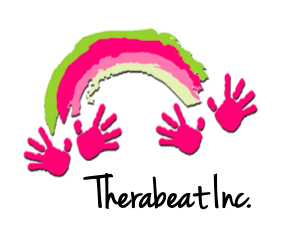The month of April is Autism Awareness month, so it is the perfect time to bring awareness of the impact music therapy can have on individuals with autism spectrum disorder (ASD). The Center for Disease Control reported in 2021 that 1 in every 44 children is diagnosed with ASD in the United States (Autism Speaks Inc., 2022). ASD is a developmental disorder that affects the nervous system and is based on impairments mainly in social interaction, communication, and repetitive behaviors (Thompson, 2012). Symptoms vary widely and can include developmental, behavioral, cognitive, psychological, and mental health symptoms. Music therapy has been identified as an effective treatment approach for social interaction, verbal communication, and socioemotional reciprocity (LaGasse, 2017).
One of the main reasons that music therapy has been so effective as a treatment approach for individuals with ASD is because music is naturally present in many homes and often involves social settings whether intended or not (Thompson, 2012). For example: music may already be present in the home through a parent singing a lullaby to their child, music being played over a speaker, or family members playing live music through instruments and voice. Even when it is not as present in the home, it is often viewed as a fun, safe, and structured way to help individuals feel more secure in social engagements (LaGasse, 2017). There have been many studies that noted that people with ASD also have a unique attraction to musical stimuli and often have a more enhanced musical ability even without much musical training (LaGasse, 2017).
Not only is music fun and naturally present, but it can activate neural networks in the brain to help synchronize neural firings, especially between similar functions such as singing and speaking, making it easier to generalize to a nonmusical context (LaGasse, 2017). Many individuals with ASD have the neural firings but lack the organization and structure leading to incongruent sensory information (LaGrasse, 2017). The rhythmic structure of music can function as a cue to help organize the neural firings to better predict and respond in social settings. Similarly the neural organization can aid in cueing things like turn taking or impulse control (LaGrasse, 2017). Something as simple as singing a consistent hello song can help aid an individual in pragmatic reciprocal communication to engage in greetings such as saying “hello,” “goodbye,” and asking or answering questions like “How are you feeling today?”
Another huge benefit of music therapy for individuals with ASD is that it is individualized to the person, which means that the therapist can address all levels of ASD, focusing on specific areas of need (LaGrasse, 2017). Though many therapeutic approaches are individualized to some degree, music therapy is highly individualized. Music therapists are trained to create treatment plans based on thorough assessments that are adapted to the individual needs with interventions that use client preferred music. They can be used with people of all socioeconomic backgrounds, cultures, and ages and can be used in schools, homes, clinics, or medical settings (LaGrasse, 2017). According to Thompson, the more natural the therapeutic environment, such as a school or a home, the more effective the therapy is for kids with ASD which is more attainable for music therapists than most other types of therapists (2012). Fuller and McLeod went a step further in their research and discovered that there were higher levels of engagement and socialization from clients with ASD when they were using telehealth as the therapeutic modality (2019). It is also believed that better learning takes place in daily routines such as those that take place in a home or natural setting (Thompson, 2012).
Music therapy can have positive effects on social skills by increasing the ability to engage in greetings, joint attention, social interactions, as well as cognitive social skills (LaGrasse, 2017). Music therapy is not the only effective therapeutic approach to help people with ASD increase social skills and communication, but it is certainly one that can be fun, in a natural setting, and broadly generalized to nonmusical contexts. It can also incorporate the parents or family by taking place in those natural environments, such as the home, building the attachment bond with family members which ultimately increases support and confidence in safe and familiar relationships (Thompson, 2012).
-Charlotte Reeder, Music Therapy Intern
References
Autism Speaks Inc. (2022). Autism statistics and facts. Autism Speaks. Retrieved April 25, 2022, from https://www.autismspeaks.org/autism-statistics-asd
Fuller, A. H., and McLeod, R. G. (2019). The connected music therapy teleintervention approach (CoMTTA) and its application to family-centered programs for young children with hearing loss. Australian Journal of Music Therapy 30, 13-30.
LaGasse, A. B., (2017). Social outcomes in children with autism spectrum disorder: A review of music therapy outcomes. Patient Related Outcome Measures, 8, 23-32.
Thompson, G. (2012). Family-centered music therapy in the home environment: Promoting interpersonal engagement between children with autism spectrum disorder and their parents. Music Therapy Perspectives, 30(2), 109-116.





